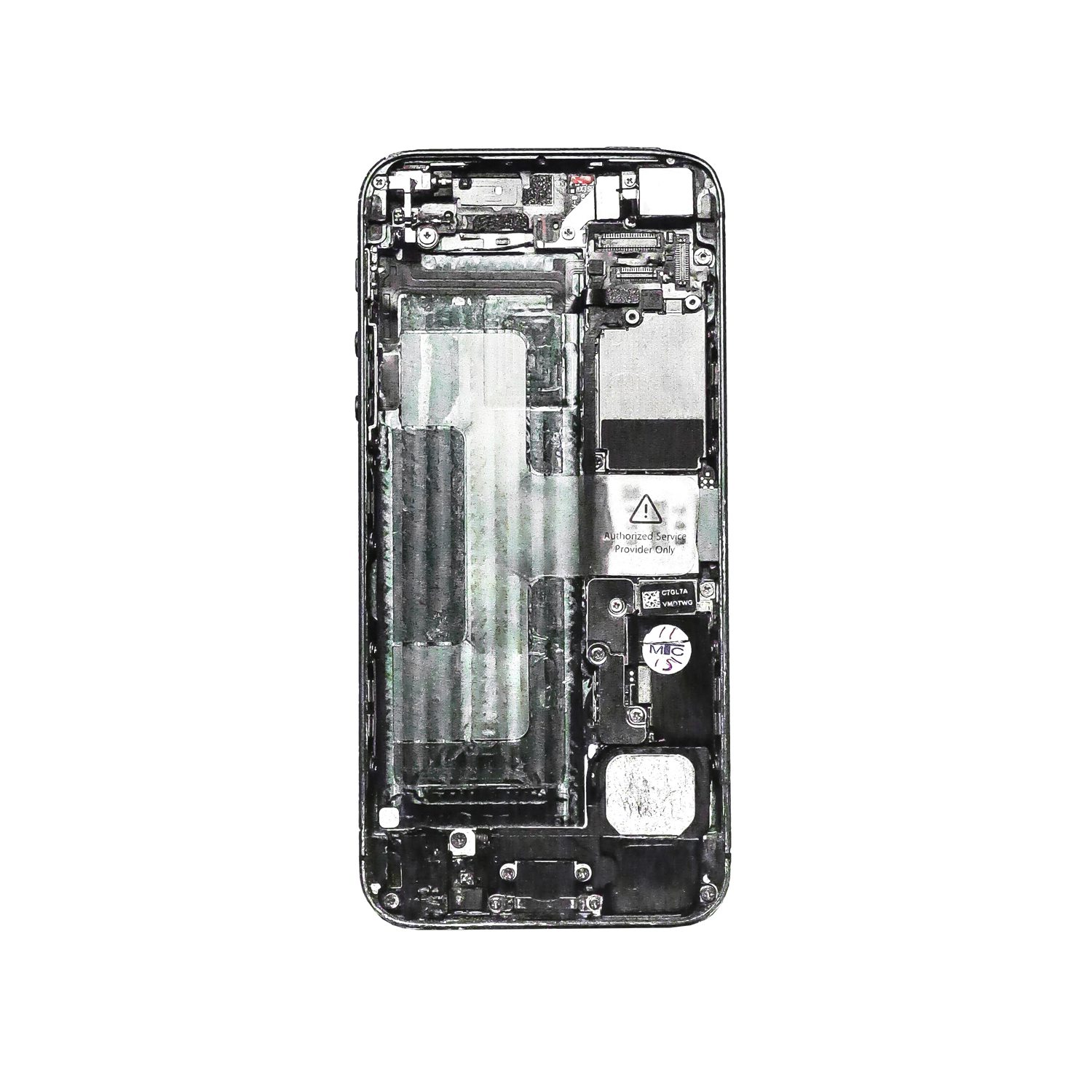articles
ARTICLES PUBLISHED BY US
Trust Is the True Currency: Why Smartphones Are Next to Demand Verification - by Seth Heine
The Tipping Point for Trust
The Consumer Electronics marketplace is ripe for disruption via the use of Trust Certificates or Digital Product Passports (DPPs). A substantial chasm of distrust must be spanned for reuse of these expensive, complicated devices to grow in popularity.
Most consumers say they would consider buying a pre-owned smartphone, yet very few actually do. The consequence is a system-wide drain of value: resale prices fall, trade-in offers shrink, consumers lose motivation to recycle, and billions of devices pile up in drawers. The GSMA estimates more than 5 billion idle phones are currently sitting unused in homes and offices worldwide (GSMA press release), and there is plenty of reason to believe that there are actually more than 12 billion used phones piled up in drawers around the world.
At its core, this is not a technical challenge—it’s a trust challenge. Smartphones and other connected devices carry invisible risks: lost or stolen status, unpaid bills, OEM or user locks, carrier incompatibility, swapped or non-OEM parts, degraded batteries, etc. Most of these are unknown to the average buyer, but any one of them can turn a purchase into a liability. Trust Certificates surface these hidden signals, turning uncertainty into transparency and skepticism into confidence: In short, “Trust turns risk into opportunity” – a quote that was repeated multiple times at the recent Mobile World Congress event in Las Vegas a few weeks ago…. Trust Certificates / DPPs (essentially the same thing) can also track hardware condition and parts authenticity to help further de-risk these devices, aligning premium pricing with OEM parts, quality repairs and generally rewarding the channel for documenting a supply chain focused on quality.
The Trust Flywheel
Trust doesn’t just make a single sale possible; it fuels a flywheel of circular value:
- Trust Certificates boost buyer confidence.
- Buyers pay premium prices for verified devices.
- Premium pricing enables higher trade-in offers.
- Higher trade-in offers motivate consumers to recycle dormant devices, and provides the lift to warrant use of authentic OEM parts for repairs, which also enables insurance companies to further derisk these devices through warranties etc.
- More supply feeds back into the market, reinforcing buyer confidence with visibly verified device options.
FIGURE 1:
Trust at the Headwaters
In the device lifecycle, value begins at the headwaters—the moment a consumer decides whether to trade in or recycle their phone. That decision hinges on the offer they receive, which depends on what the market believes the next buyer will pay.
If resale markets lack trust, buyers hesitate and prices stagnate. Weak resale prices mean low trade-in offers, and at the headwaters, that dam stops the flow. Billions of devices remain stuck in drawers, untapped and undervalued.
But when Trust Certificates / Digital Product Passports (DPPs) provide accurate, verifiable transparency, the opposite occurs:
- Buyers pay premiums for quality, documented devices.
- Higher resale values enable better trade-in offers at the headwaters.
- Better offers motivate consumers to recycle or sell dormant devices.
- More supply flows back into circulation, fueling growth across the ecosystem.
Sneakers Show the Way
Platforms like StockX and GOAT pioneered the idea that resale marketplaces could win not by moving goods faster, but by embedding authentication as a core service. Every pair of sneakers passes through expert verification before it reaches the buyer. Importantly, the DPP for a connected device allows it to be tracked through the acquisition / processing / erasure / diagnostics / repair / kitting and resale processes in real time, and that means that these devices can be digitally verified, and do not require that hand inspection that sneakers require. This enables all of this data to come together much more efficiently and transparently for DPPs; it costs far less to collect all of this data and to present it to marketplaces and consumers than it costs to ships some shoes somewhere for inspection.
The results for mandated authentication services are striking. In 2024, StockX rejected more than 370,000 products — collectively valued at nearly $74 million — for not meeting its verification standards. Focusing specifically on sneakers, the company blocked nearly 250,000 pairs from its marketplace in 2024. Of those, over 30,000 pairs were flagged as suspected counterfeits. The gross merchandise value (GMV) of these suspected fake sneakers totaled nearly $10 million, representing a significant potential risk the platform mitigated for its customers (StockX Brand Protection & Customer Trust Report 2024).
The Tipping Point for Smartphones
The smartphone resale market is now reaching the same inflection point sneakers hit years ago—only on a much larger and more consequential scale.
IDC’s latest tracker shows used smartphone shipments reached about 195 million units in 2023, up 6.4% year over year, with shipment value of $72.9 billion (IDC via BusinessWire). IDC further forecasts the used smartphone market will reach approximately 257 million units by 2028, a five-year CAGR of about 5.7% (IDC press note). Alongside demand growth, the GSMA’s estimate of 5+ billion idle devices underscores the scale of untapped supply (GSMA press release), and amazingly, there are likely more than 10 billion used devices ready for collection & reuse (my personal guestimate).
FIGURE 2: USED SMARTPHONE MARKET (IDC 2023 → 2028)
Closing the Trust Gap with PhoneSpection
This is where PrologMobile’s PhoneSpection Report makes the leap from concept to execution.
A PhoneSpection Report is an interactive Digital Product Passport (DPP) for smartphones (or any connected device with an IMEI). By pulling from network, OEM, and diagnostic data, it verifies in real time whether a device is:
- Blocklist-free (not lost or stolen)
- Carrier-ready (compatible with networks where it will be resold)
- Lock-free (clear of OEM, carrier (no unpaid bills) or user activation locks)
- Authentic and intact (parts provenance verified)
- Healthy (battery and component diagnostics transparent to the buyer)
Unlike static reports, PhoneSpection is interactive. Buyers and sellers can click into details, marketplaces can embed it directly in listings, and carriers or insurers can connect their own requirements.
Conclusion — Defining the Standard Before It Defines You
Consumers—especially younger ones—already understand and accept the idea of paying for authentication. StockX and GOAT proved it in sneakers. Now, with billions of connected devices in circulation, they are likely to expect the same transparency in electronics.
Trust Certificates / Digital Product Passports (DPPs) are the mechanism that bridges this gap. And PrologMobile’s PhoneSpection Report is built to deliver it—accurate, interactive, and integrative across the ecosystem. In fact, this data flows through and across multiple ecosystems: B2B, B2C, P2P all benefit from this data fluidity. And it is also worth noting that a consumer-facing trust certificate or Digital Product Passport is a curated synopsis of the data most available or important to a consumer to consider at the time of purchase. In fact, hundreds or even thousands of data points are available for each device’s passport, and these myriad data points can help inform sortation and valuation across and through all platforms.
As a device travels from acquisition through redeployment, that device will likely be transacted multiple times across multiple platforms as it works its way back to the consumer. DPP data can track this device from manufacture (CO2 reporting etc), initial distribution through sale, and then through myriad events over multiple lifecycles, providing marketplaces and sellers with the ability to accurately assess each device for it’s optimal path to reuse. This means that ultimately thousands of data points will have to be collected, managed, standardized and shared for every device over multiple lifecycles – a herculean task but one that benefits every participant in the circular economy. And we can do all of this today…
The lesson from sneakers is simple: once consumers experience authentication, they demand it. For smartphones, the tipping point is closer than most expect. The question is not whether trust certificates will become the standard, but who will define that standard. Will the large marketplaces and hyperscalers lead and immediately tip the balance on how quickly this happens? Or will more nimble smaller marketplaces take the lead and set the pace? Or will all of this take much longer than I am predicting, and require the force of legislation (largely driven by the EU), which kicks into effect in 2027? We’ll see…
I believe there is a real first mover advantage here: the platforms that move first—marketplaces, carriers, insurers, OEM partners—won’t just keep pace with the shift. They’ll set the rules of the game for the foreseeable future.
How PrologMobile Reduces Returns (RMAs)
How PrologMobile Reduces Returns (RMAs)
Return Merchandise Authorizations (RMAs) have plagued the mobile device re-use industry since its inception. There are several key reasons that cause the majority of mobile device returns. They include:
- Due to a lack of device-specific data, the seller does not know exactly what they are selling. As a result, the buyer does not always get exactly what they expected. The result is an RMA.
- There are device variations that affect carrier network connectivity, compatibility and performance that are undiscoverable using traditional phone investigation techniques. A seemingly small device-carrier mismatch can result in a return.
- Sellers often lack essential device-specific data that is needed to ensure device operability. Excessive RMAs result when device technologies and features are not properly vetted.
Essentially, the lack of several types of device-specific data contributes dramatically to the issue of RMAs. If you utilize the correct data, RMAs can be reduced dramatically. In fact, one of our clients even disbanded their entire RMA team upon implementation of our data services.

So how exactly does PrologMobile data enable organizations to reduce or eliminate their IMEI-based device RMA issues?

First, PrologMobile validates each device’s unique physical characteristics via its IMEI. And not just manufacturer, color and model number. PrologMobile provides more comprehensive device intelligence than anyone else. Radio Band configurations. Modem Variants and over 1,000 carrier emulators to ensure device / carrier fit every time. In total, we capture over 500 specific data points for each device we assess. This ensures that both buyers and sellers have accurate, device-specific information, greatly reducing RMAs and ensuring a seamless transaction.
PrologMobile then performs carrier and OEM checks. We identify the status of each device on the main US-based carriers. Does the device have unpaid bills with a specific carrier? Is it locked, lost or stolen? Is FMIP activated? This data provides insights into the value and carrier compatibility of each device. Knowing in advance of the sale which devices will (or won’t!) work on a specific network reduces RMAs.
In concert with our diagnostics partners, we can then analyze the functionality of each device. Can the battery take a full charge? Do the microphones and cameras work? Over 50 core functions can be tested which produces the full device diagnostics that are needed for repair, grading and pricing.
Once each device has been fully tested, PrologMobile issues a PhoneSpection Report (PSR) documenting our findings. This report will remove the uncertainty involved in typical mobile device resale operations. The exact phone characteristics will be documented per IMEI, as well as valuable OEM and network compatibility information. Device defects will be clearly communicated, enabling more accurate pricing, marketing and repair information.
The combined power of our data provides a unique view of each device in your inventory. By knowing all of the specifics for each device, our clients are better positioned to deploy their inventory in the most advantageous way possible, for maximum prices and minimal returns.
Are you ready to start eliminating RMAs? Contact us and we will show you how!
See how our data enabled a global electronics retailer to disband their RMA team.
